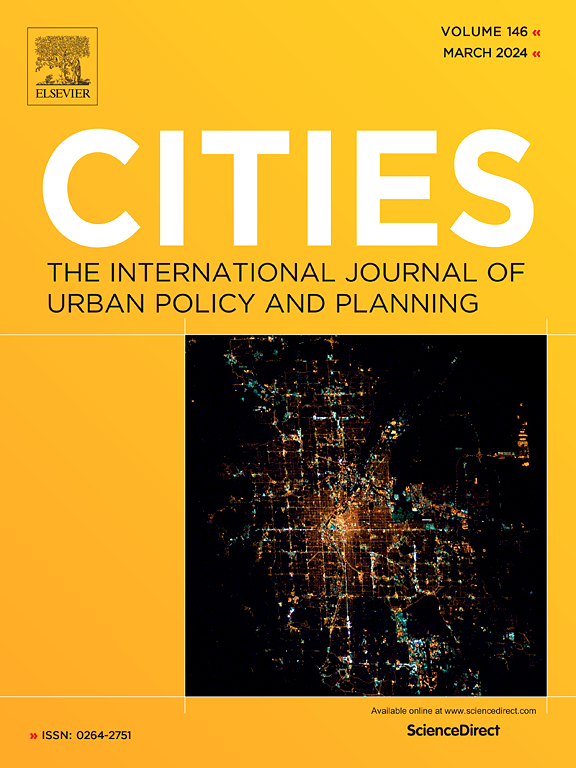Demographic trends in China's northeast borderlands: Shocks from core-periphery relations and border effects
IF 6.6
1区 经济学
Q1 URBAN STUDIES
引用次数: 0
Abstract
Border regions are not only the geographical margins of national sovereignty, but also the vanguard to advance cross-border cooperation. Their demographic trend is shaped by the interplay of core-periphery dynamics and geopolitical relations, with distinct geopolitical contexts inevitably giving rise to divergent trajectories in borderland population development. Considering locational uniqueness, this paper explores the contributing factors of the spatiotemporal heterogeneity of population in China's northeast borderlands. The results indicate that the China-DPRK borderlands exhibited more pronounced trends of demographic decline compared to the China-Russia borderlands. Furthermore, in the China-Russia borderlands, depopulation and aging deteriorated with the increase in the distance from the border, while the opposite was true for China-DPRK borderlands. The decline of borderland population could be attributed overall to the siphon effect dominated by core-periphery relations. Nonetheless, in the China-Russia borderlands, the border effect exerted a positive influence on population development, particularly in regions with a robust industrial foundation and abundant financial resources. This spatial effect adhered to the distance-decay principle, which to a certain extent mitigated the adverse impacts of core-periphery dynamics. In the China-DPRK borderlands, the border effect projected a negative influence on population development, and its inhibitory effect was particularly pronounced in industrial regions. Spatially, this effect gradually diminished with the increase in the distance from the border, which reinforced the adverse impacts of core-periphery dynamics on borderland population trajectories. These findings can serve as a foundational basis to formulate targeted population development strategies and optimize the spatial arrangement of populations in border regions.
中国东北边陲人口趋势:核心-边缘关系冲击与边界效应
边境地区既是国家主权的地理边缘,也是推进跨境合作的前沿阵地。它们的人口趋势是由核心-边缘动态和地缘政治关系的相互作用形成的,不同的地缘政治背景不可避免地导致边境地区人口发展的不同轨迹。从区位独特性出发,探讨中国东北边疆人口时空异质性的影响因素。结果表明,中朝边境地区人口下降趋势比中俄边境地区更为明显。此外,在中俄边境地区,人口减少和老龄化随着距离边境的增加而加剧,而在中朝边境地区则相反。边陲人口的减少总体上可归因于以核心-边缘关系为主的虹吸效应。然而,在中俄边境地区,边境效应对人口发展产生了积极的影响,特别是在工业基础雄厚、金融资源丰富的地区。这种空间效应遵循距离衰减原理,在一定程度上缓解了核心-外围动态的不利影响。在中朝边境地区,边境效应对人口发展产生了负面影响,其抑制作用在工业地区尤为明显。在空间上,随着距离边界的增加,这种效应逐渐减弱,这加强了核心-边缘动态对边界人口轨迹的不利影响。研究结果可为制定有针对性的人口发展战略和优化边境地区人口空间布局提供基础依据。
本文章由计算机程序翻译,如有差异,请以英文原文为准。
求助全文
约1分钟内获得全文
求助全文
来源期刊

Cities
URBAN STUDIES-
CiteScore
11.20
自引率
9.00%
发文量
517
期刊介绍:
Cities offers a comprehensive range of articles on all aspects of urban policy. It provides an international and interdisciplinary platform for the exchange of ideas and information between urban planners and policy makers from national and local government, non-government organizations, academia and consultancy. The primary aims of the journal are to analyse and assess past and present urban development and management as a reflection of effective, ineffective and non-existent planning policies; and the promotion of the implementation of appropriate urban policies in both the developed and the developing world.
 求助内容:
求助内容: 应助结果提醒方式:
应助结果提醒方式:


